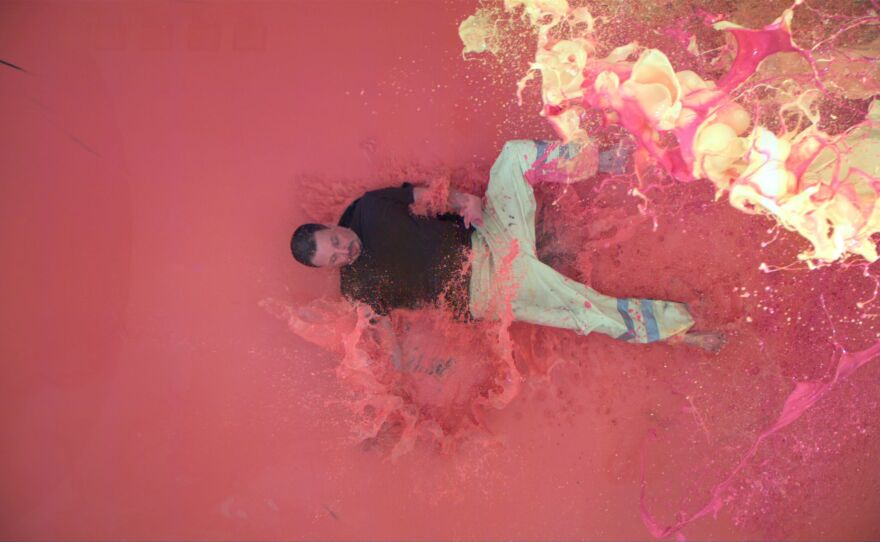The Mattress Factory Museum was never meant to be a museum, says Barbara Luderowski. She should know; the artist and designer launched the venture herself in 1977, in a literal former mattress factory on Pittsburgh’s North Side. It began as a multi-story community center that hosted a dance studio, art exhibits, theater performances, film screenings and more, including a vegetarian co-op café where you could get dinner for $2.
Site-Specific: A History of the Mattress Factory screens at 6 p.m. Thursday, May 3, at the Mattress Factory on the North Side. Admission is free with an RSVP recommended. A second screening is set for 7 p.m. Thursday, May 10, at the Melwood Screening Room in Oakland, for $8.
Within a few years, however, the Mattress Factory would begin to forge the identity that has made its name known worldwide as a venue specializing in imaginative new installation art that it commissions itself. And visitors have come to know it as the place where the art doesn’t hang on the wall, but rather takes over whole rooms, whole floors and whole buildings, perhaps with several tons of dirt, walls full of mirrors, or permanent holes punched in walls, floors and ceilings.
That remarkable 41-year history, which has included collaborations with artists as accomplished and diverse as John Cage, Keith Haring and Carrie Mae Weems, is recounted in Site-Specific, a new documentary by local filmmaker David Bernabo. The lively feature-length film premieres Thursday at the museum.
The idea to make the film was Bernabo’s, and that’s appropriate: One of the things that’s made the Mattress Factory unique is its artist-centric style.
“He worked like any other artist that we've worked with,” said Mattress Factory co-director Michael Olijnyk, speaking of Bernabo. “You know, he showed us kind of raw footage and we had some opinions, but then I said, 'Listen you can do what you want to do.'”

The film, in part, recounts Olijnyk’s own story. He first visited the Mattress Factory in the 1970s as a Carnegie Mellon University student. Not long after that, he moved in. He and Luderoski have both lived there for decades.
In the film, the venue is called an “alternative museum,” something different than traditional galleries and museums that typically show pre-existing work and keep artists on tight timelines and tight budgets. By contrast, the Mattress Factory has always been about choosing interesting artists and helping them realize their visions.
“When we sit down with an artist, we talk ideas, we rarely talk budget,” said Olijnyk. “We say, ‘What are you interested in making? What is the feel of the kind of thing you want to do?’ And it's this real dialogue, this partnership, and it's like the way an artist would work in their studio.”
That approach has led to such memorable projects recalled in Bernabo’s film.
Meg Webster’s large-scale 1985 rammed-earth sculpture fell apart spectacularly, and David Ellis’ 2008 installation grew to require a huge pool of purple paint in the building’s lobby. (That piece had a performative element, too: Ellis videotaped himself leaping into the paint, in super-slow motion; the acquisition of the special camera required is another example of the lengths the museum has gone to in order to accommodate artists.) More recently, Dennis Maher’s A Second Home took over a whole nearby rowhouse the museum owns, and Pittsburgh-based artist Vanessa German built in an epic, room-sized work sometimes.we.cannot.be.with.our.bodies. The film documents its installation last fall.
Olijnyk said letting artists make new work is both what keeps the museum alive... and makes it not really a museum in the traditional sense.
“It's not like we're opening up a crate, and we know where we're going to put [the artwork],” he said. “We have no idea what it's going to be, and artists are just kind of working out their ideas and then they slowly evolve. Some of them are great. Sometimes the artist never wants to do it again. But where else could they try that?”
Bernabo’s film draws on the museum’s extensive archive of film, video and photographs – it’s received a fair amount of coverage over the years from local TV stations, for instance – as well as interviews with current and former staffers and artists who’ve worked there. The film also tells the story behind perhaps the museum’s signature permanent installation, Yayoi Kusama’s Infinity Dots Mirrored Room.
The film ends by looking ahead, including toward a planned new piece by James Turrell, whose light-based work has long had a home there. Characteristically enough, while Olijnyk has seen Site-Specific, you probably won’t see him at the May 3 premiere. He said he’s less interested in the past than in the future.
“We’re looking forward. We didn’t want to look backward,” he said. “But it’s great for people who don’t know the Mattress Factory.”
In addition to Pittsburgh screenings on May 3 and 10, the film will also tour to St. Louis, Mo.; Wichita, Kan.; Denver; Kansas City, Mo.; and Lexington, Ky.







